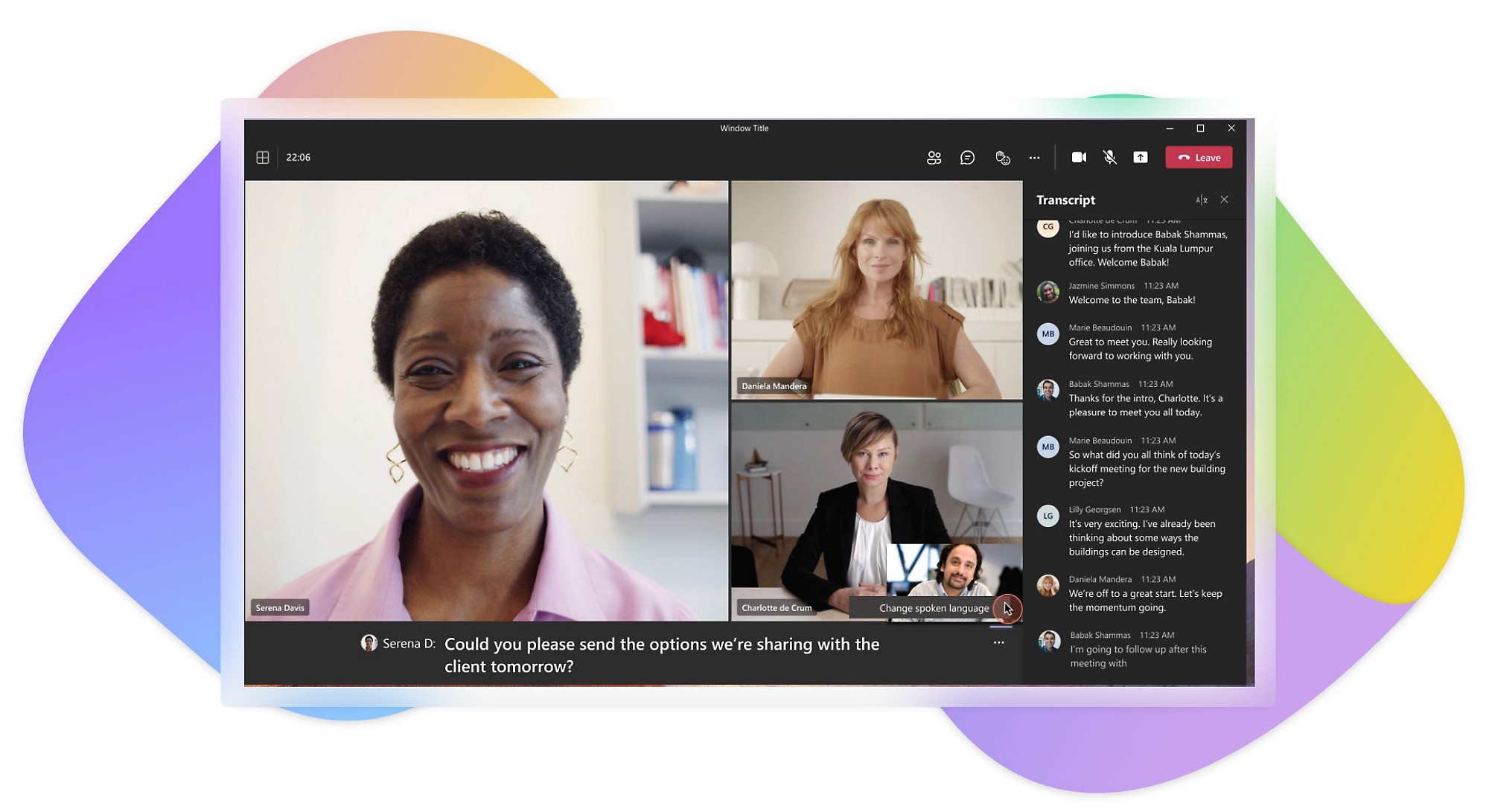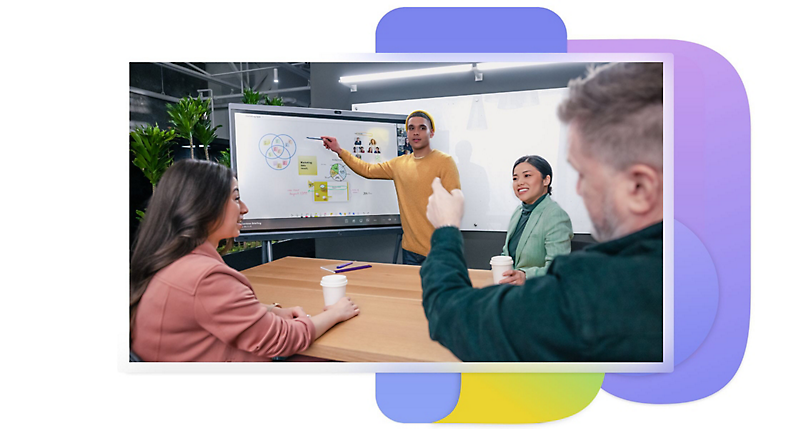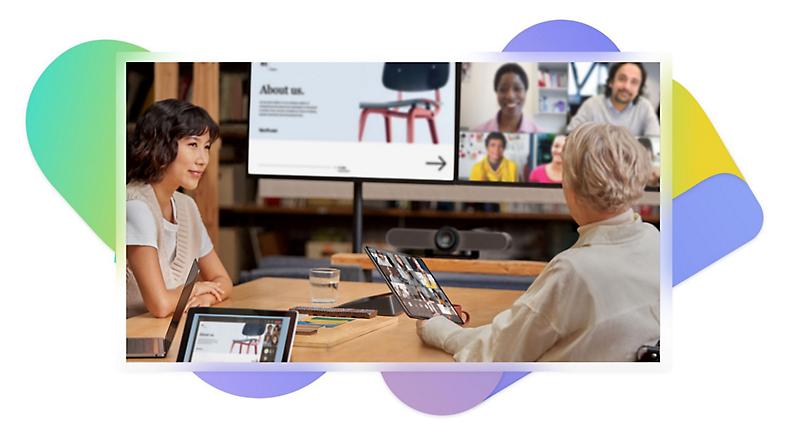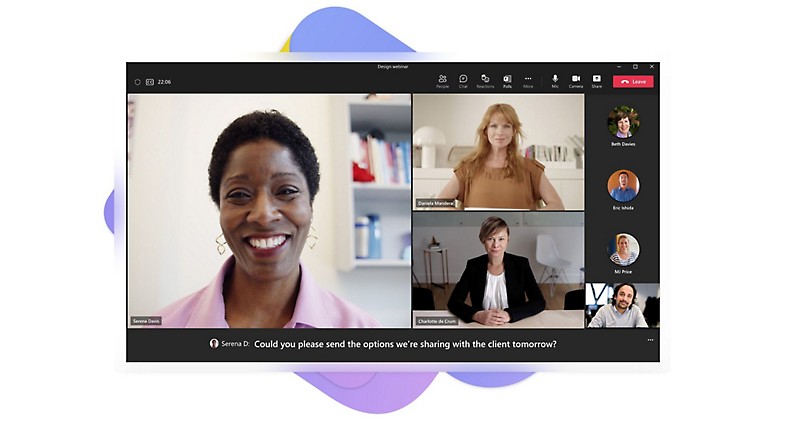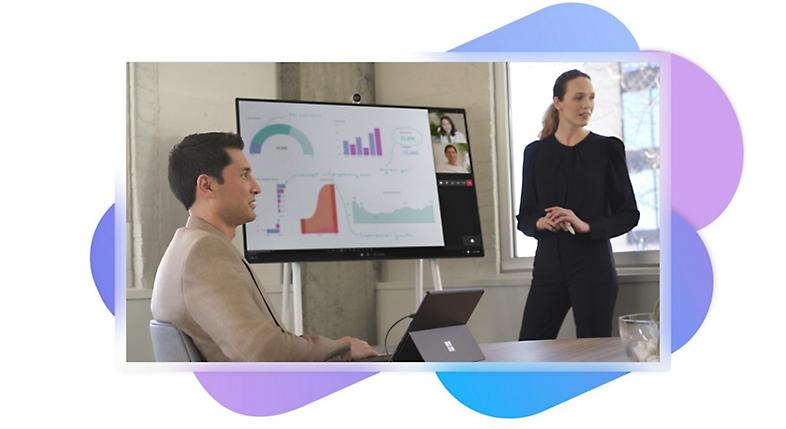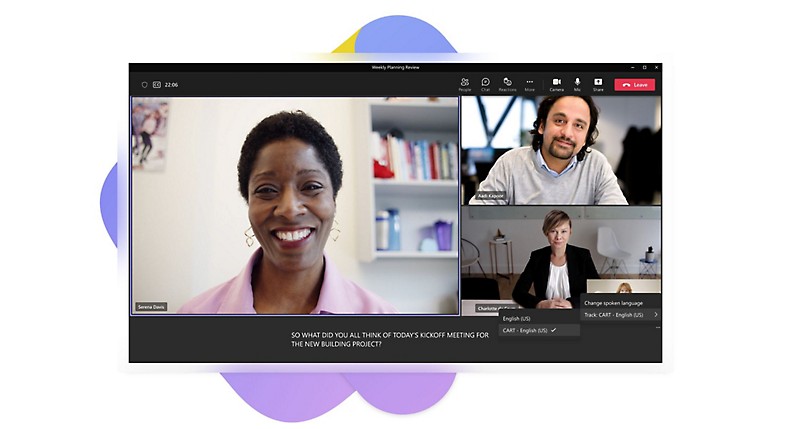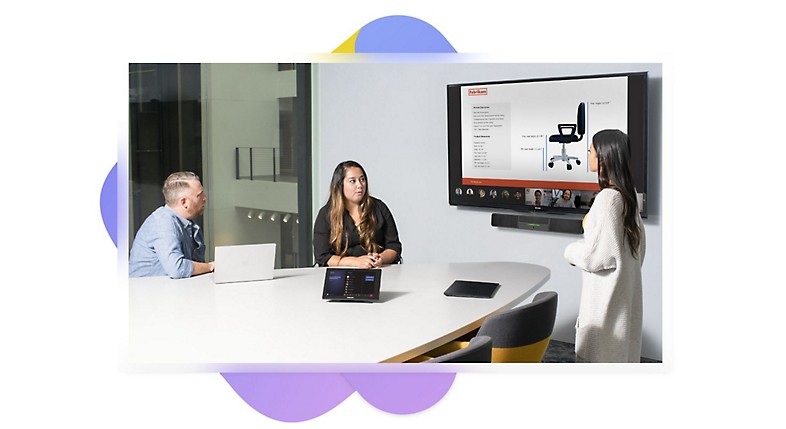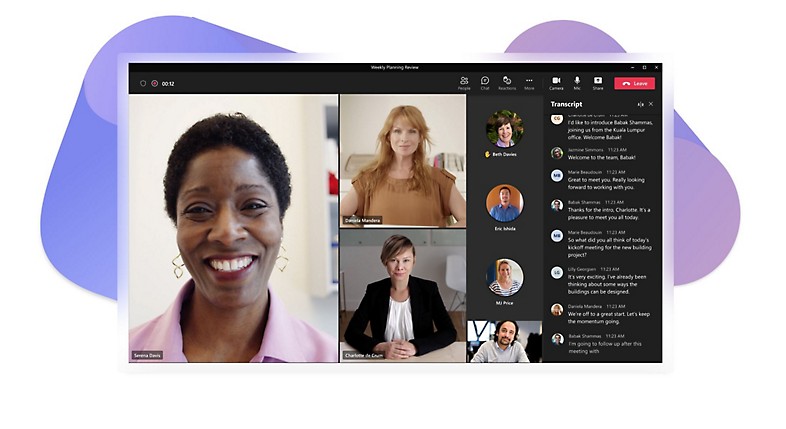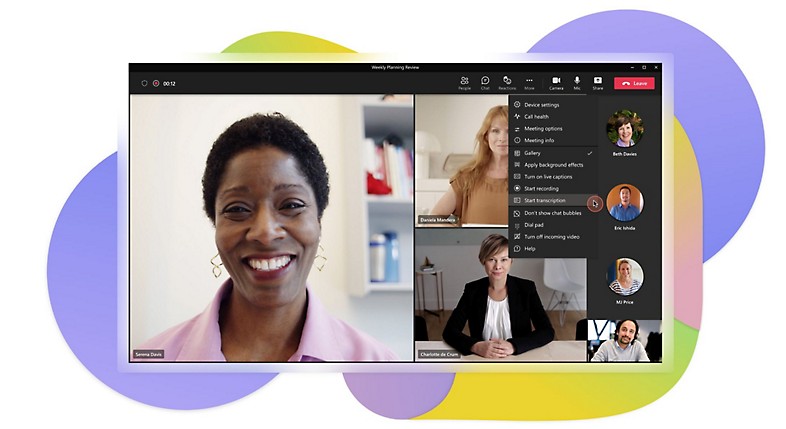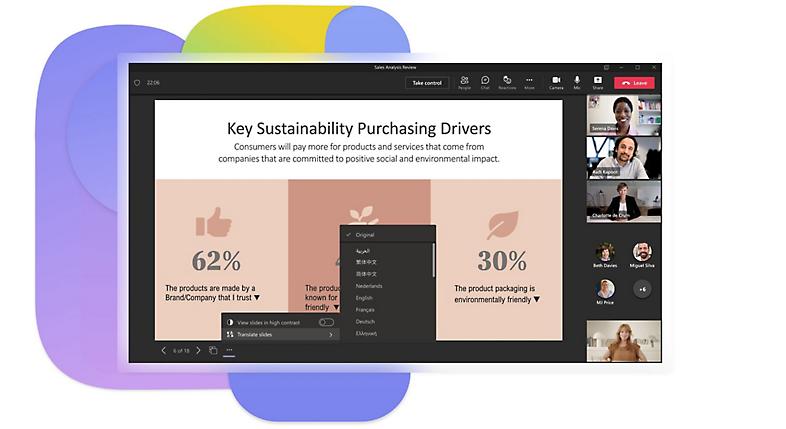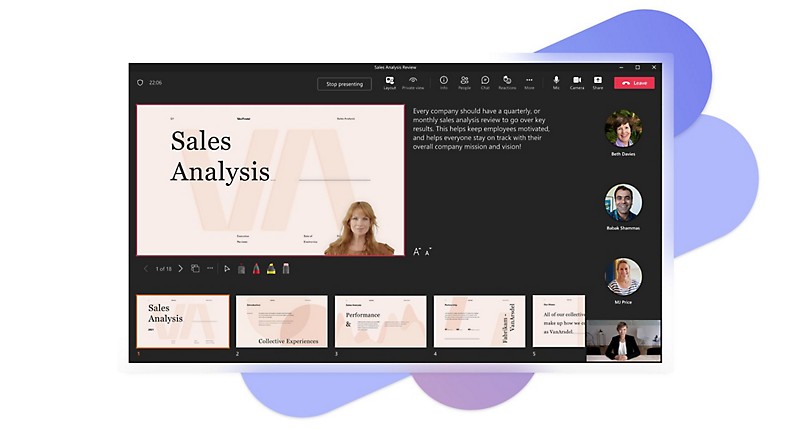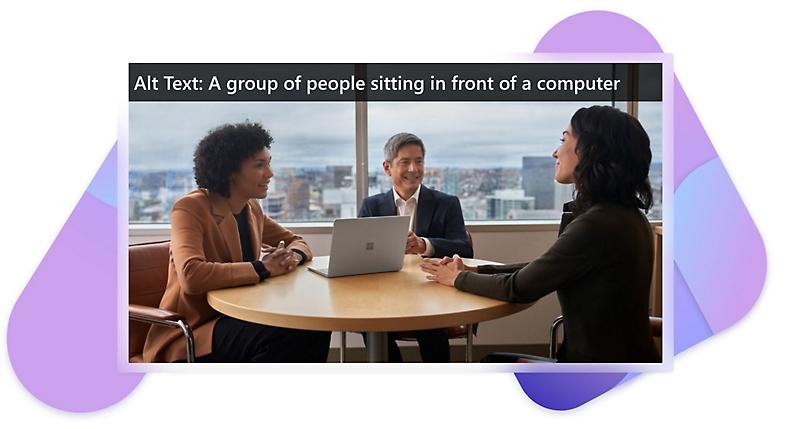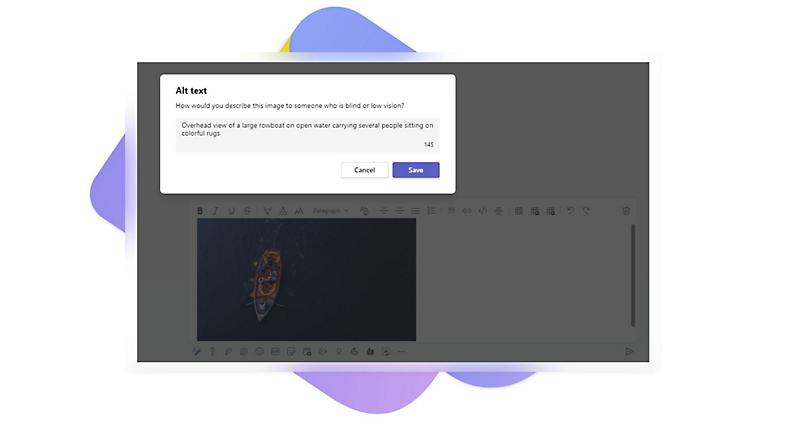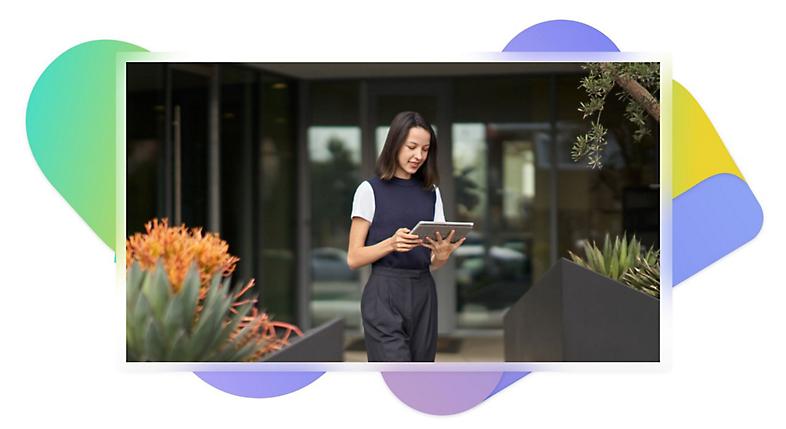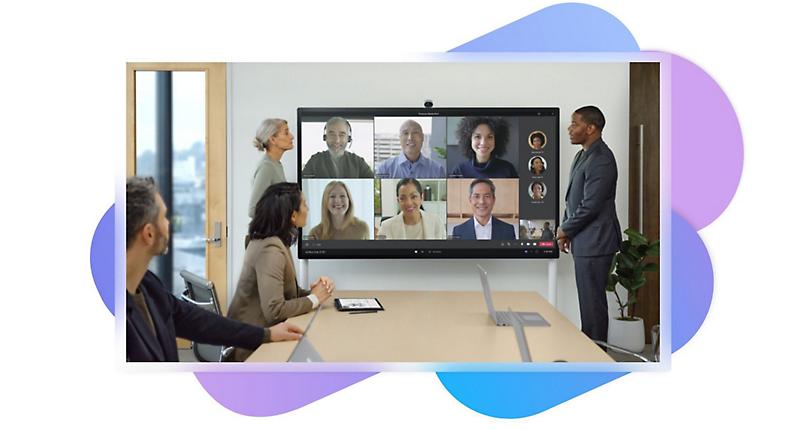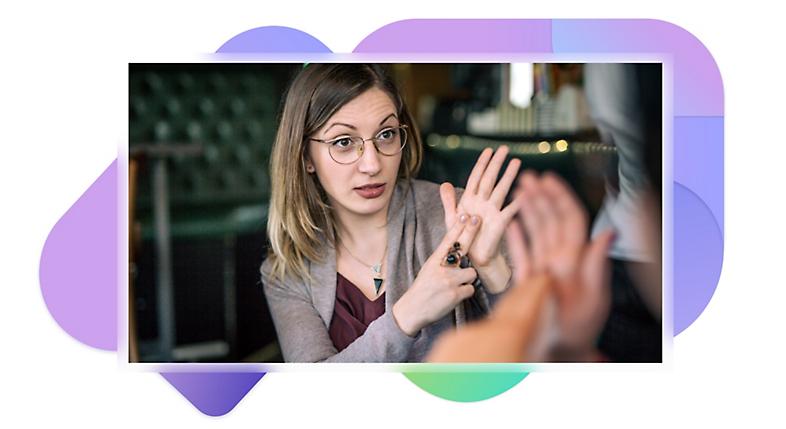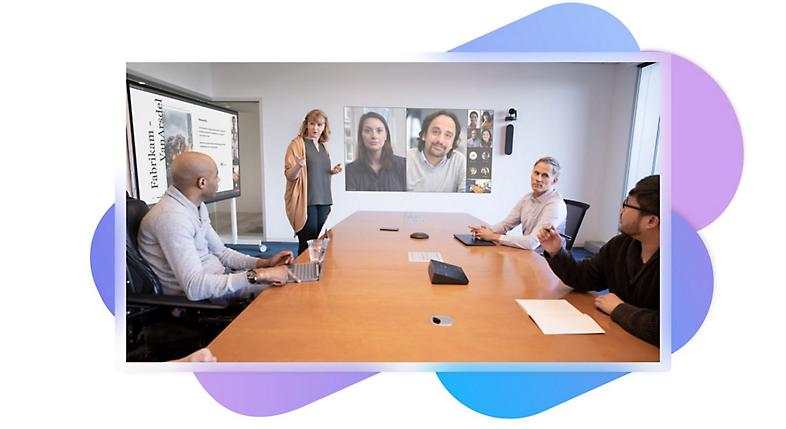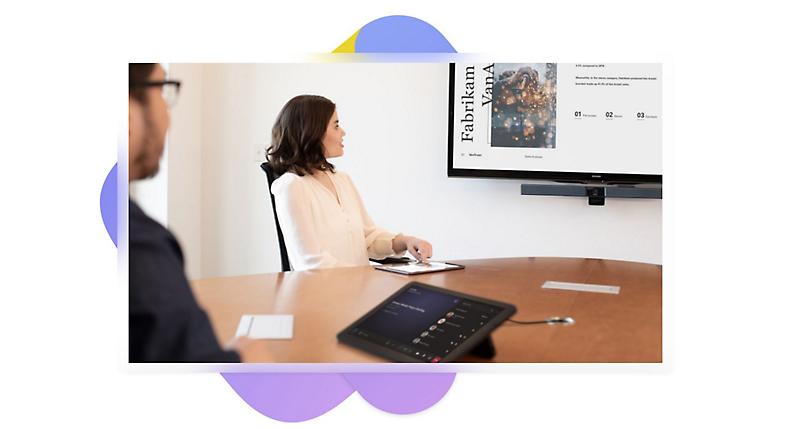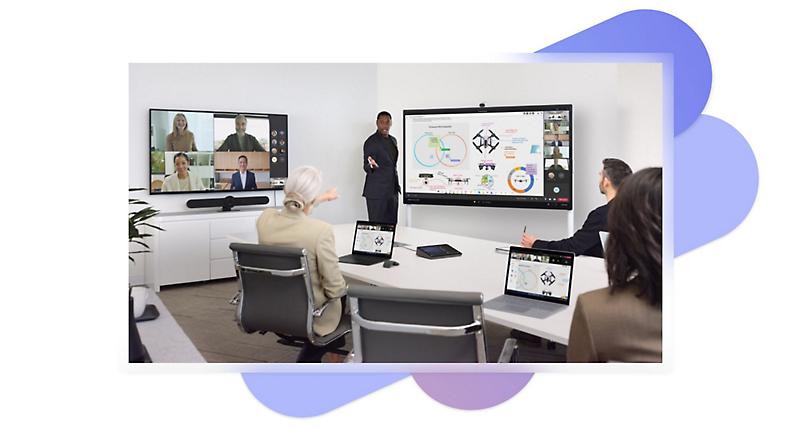
Accessibility for everyone
Collaborate your way with accessible features like closed captions, audio transcription, and live reactions.
Enable inclusive collaboration in hybrid meetings
Empower everyone by configuring meetings and calls with accessibility and inclusion in mind.
Use captions and transcription
Captions and transcriptions provide options to see text as well as, or instead of, audio content.
Reduce distractions
Tweak your notification settings and use custom backgrounds to help keep the focus on what matters.
Participate your way
Choose how you contribute to the conversation with chat, live reactions, hand raising, and more.
Empower everyone
More than 1 billion people around the world live with a disability. Enable collaboration for everyone with unique accessibility features and tools in Microsoft Teams.
-
Captioning
Captioning features convert audio content into text to make meetings and video content more accessible to people who are deaf or hard of hearing, people with different levels of language proficiency, and more.
Closed versus open captions
Closed captions are most common. For content like video recordings, closed captions exist as a separate file, which allows viewers to switch them on or off. Open captions, by contrast, are burned into the video itself, and cannot be turned off.
Offer readable, real-time captions
Auto-generated real-time captioning, or live captioning, is often used for live meetings and events. Live captioning is one way to increase the accessibility of meetings and events for those who are deaf or hard of hearing.
Live captioning in Microsoft Teams
Microsoft Teams provides live captioning with speaker attribution in 28 languages by default. Meeting participants can simply turn on live captions from the meeting controls to view captions at the bottom of the meeting window. Live captions are not saved for later viewing.
CART captioning
Communication access real-time translation (CART) captions, or human-generated real-time captioning, is provided by specially trained captioners using specialized software along with phonetic keyboards or stenography methods to produce real-time captioning for meeting and event participants.
Back to tabsUse CART captions in Microsoft Teams
CART captions are available in Microsoft Teams as an option chosen by the meeting organizer. To provide captions, the meeting organizer will need to invite the CART captioner to the meeting and provide them with a specialized link to connect their captioning software to the meeting.
-
Convert speech to written text
Audio transcription is the process of converting speech and other audio components into written text. Transcripts are important for audio-only and audio and video content. Transcripts, unlike captions, are generally made available as a separate document or hyperlinked within the online content.
Live transcripts in Microsoft Teams
Live transcripts with speaker attribution are available in 28 languages in Microsoft Teams. View live transcription in real-time alongside meeting content, or review after the meeting to catch up at your own pace.
Back to tabsEnable live transcription in Microsoft Teams
Enable live transcription from the Meeting options menu within a Teams meeting or set to start with a single click, along with recording.
-
Share content inclusively
Share more accessible content by using built-in features across Microsoft products.
PowerPoint Live
PowerPoint Live in Teams enables participants to engage with content more flexibly. Participants have the option to privately change color contrast, use a screen reader to engage with shared slides, or navigate through shared slides at their own pace, going back to any slide for quick reference without interrupting the meeting.
Adding image descriptions
A tenet of accessible design, alternative (alt) text is a textual substitute for images in webpages or digital settings. It’s meant to convey the “why” of the image in relation to other content and is read aloud to readers using screen readers. Alt text tags must match images so screen readers are able to understand the visual content. Most alt text shouldn’t be longer than a sentence or two.
Writing effective alt text
To write effective alt text, make sure to convey the purpose of an image in a precise and unambiguous manner. Consider what makes the image important such as the setting, the emotions on people’s faces, the colors, or the relative sizes. Objects with detailed information, like infographics, need alt text to provide the information conveyed in the object.
Add alt text to images in Teams Chat
Ensure everyone understands chat posts by right clicking on any image you share to add alt text before you post.
Inline translation in chat
Inline chat message translation within Teams facilitates collaboration across language barriers since messages are translated into the language specified by each participant.
Back to tabsAudio description
Audio description is a voiceover description of what is being shown on a video. Typically, audio descriptions augment the audio portion of a presentation with information during pauses in dialogue. This description includes information about actions, presenters (such as new or additional presenters), scene changes, and any on-screen text not described by the speaker or presenter.
-
Contribute your way in Teams
Live reactions provide a quick, unobtrusive way for participants to express an opinion. Ordered hand-raising in meetings helps give everyone a chance to contribute. Alternatives like chat, surveys, quizzes, and polls help attendees feel more comfortable speaking up. Animated GIFs, stickers, and more than 800 emojis let everyone express themselves in the way they prefer.
Back to tabsContribute your way in Teams
Live reactions provide a quick, unobtrusive way for participants to express an opinion. Ordered hand-raising in meetings helps give everyone a chance to contribute. Alternatives like chat, surveys, quizzes, and polls help attendees feel more comfortable speaking up. Animated GIFs, stickers, and more than 800 emojis let everyone express themselves in the way they prefer.
-
Background effects
Reduce distractions by choosing background blur or a background image in virtual meetings when using an app such as Microsoft Teams. This keeps the focus on you and is especially helpful for those who read lips or may have conditions that make focusing a challenge.
Backgrounds and sign language
Those communicating in sign language should avoid using background effects to make sure your hands stay visible at all times.
Back to tabsBackground effects
Reduce distractions by choosing background blur or a background image in virtual meetings when using an app such as Microsoft Teams. This keeps the focus on you and is especially helpful for those who read lips or may have conditions that make focusing a challenge.
-
Intelligent speakers
Microsoft Teams intelligent speakers are designed to identify and differentiate the voices of 10 people talking in a Teams Room. During a meeting, all participants who speak are identified and post-meeting transcripts identify both remote and in-room attendees.
Intelligent speakers use voice profile information to identify who is speaking. Delivering excellent audio performance, intelligent speakers offer a bridge between remote work and the office. Two models were created in partnership with Yealink and EPOS.
Yealink and EPOS
Yealink’s MSpeech is an intelligent speaker with AI features including attributed live transcription, and Cortana voice, for Microsoft Teams Rooms. The EPOS Capture 5 is a premium speaker with a seven-microphone array for capturing all meeting participants.
Back to tabsSennheiser
Sennheiser’s TeamConnect Intelligent Speaker is optimized for Microsoft Team Rooms for up to 10 people. With Microsoft Cortana voice built in, participants control the TeamConnect Intelligent Speaker simply by speaking voice commands.
Learn more about accessible meetings in Teams
Accessibility support for Microsoft Teams
Configure Teams meetings and calls for inclusion
See what’s new in accessibility across Microsoft 365
Disability support
The Disability Answer Desk (DAD) provides customers with a dedicated support team to help resolve issues related to accessibility, listen to feedback and suggestions, and answer any questions.
The enterprise Disability Answer Desk (eDAD) provides organizations with support resolving issues related to the functionality of Microsoft products being used with assistive technology and conformance documentation for products.

See how customers use Microsoft 365 to be more inclusive
Marks & Spencer combines 137 years of experience with Microsoft 365 digital tools to usher in the future of retail
“Colleagues of all abilities benefit from accessibility features like slowing down the playback speed of a Teams meeting recording or using captioning to help them stay focused on what’s being said. “
Lorna Woodman: Project Manager for Visual Systems and cofounder of the Buddy Network, Marks & Spencer

Raising awareness that disabled people can do so much more with Microsoft
"I use Microsoft Teams to manage my team. It allows people who traditionally wouldn’t have that ability to collaborate, to work from home – now they can. "
Raj Jeyaraj: Head of Operation, Inclusion Scotland

Additional Microsoft accessibility resources
Find more accessibility resources for Microsoft Teams and other Microsoft products, such as Microsoft 365 and Windows 11.

Accessibility overview of Microsoft Teams
Ensure that all participants have the best possible experience using Microsoft Teams with features such as reduced background noise, live closed captions, and background blur.

Configure Microsoft Teams meetings and calls for inclusion
Give participants greater flexibility in how they engage with your Teams environment by using features such as captioning of live video and support for sign language interpreters.

Disability Answer Desk support
The Disability Answer Desk is where customers with disabilities get support with Office apps, Windows, XBox, and more.

Accessibility at work
Digital Accessibility for the Modern Workplace is a LinkedIn Learning course featuring Hector Minto, a Senior Technology Evangelist at Microsoft.

Microsoft accessibility overview
Read about our five-year commitment to help decrease the gap in education, employment, and access to technology for people with disabilities around the world.

7 tips to make meetings more inclusive and accessible
If you have a lot of online meetings, it is likely that someone in that meeting will have a disability. Microsoft Teams shares seven things you can do to create a more inclusive and accessible experience.
Frequently asked questions
-
When choosing between open or closed captions, consider that open captions cannot be turned off since they’re embedded into a video or multimedia presentation. Whereas closed captions can be turned on or off.
-
Closed captions are primarily intended for times when the entire audio component cannot be heard by the viewer. Subtitles are typically included for those who cannot understand dialogue.
-
Often the easiest way to transcribe a video to text is by uploading the file to a software service, which does it automatically. Some media viewer platforms offer transcription of uploaded videos if requested.
-
Online tools have made transcribing audio to text fast and straightforward. Simply upload the file for transcription and expect the transcript in minutes or hours. Microsoft Word for the web allows uploading audio files for transcription.
-
Live captions and CART captions are similar since both happen in real time. However, CART caption providers are specially trained to use technology (stenotype, laptop, or software) to translate speech and audio into real-time captions.

